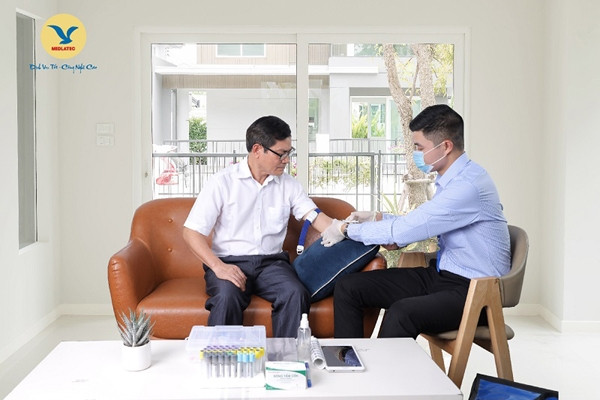Warning signs of liver damage caused by alcohol
Excessive alcohol consumption causes decreased liver function, cirrhosis of the liver, more serious liver transplant and increased risk of liver cancer.
The liver breaks down potentially toxic substances, including toxins from alcohol. When you drink alcohol, different enzymes in the liver break down the alcohol to remove it from the body. When you drink more than your liver can effectively process, alcohol and its byproducts can damage the liver. This increases fat in the liver and over time leads to inflammation and the accumulation of scar tissue. Alcohol-related liver damage is the most common cause in people who regularly consume alcoholic beverages.
The early stages of alcoholic liver disease often have no symptoms. The person may not even know the liver has been damaged by alcohol. Symptoms include liver swelling, which can lead to discomfort in the upper right side of the abdomen, fatigue, unexplained weight loss, loss of appetite, nausea and vomiting.
Drinking too much alcohol will lead to liver damage such as fatty liver, hepatitis, cirrhosis.
Steatosis
Fatty liver disease occurs when fat begins to accumulate in the liver. Excessive alcohol consumption can inhibit the breakdown of fat in the liver, causing fat accumulation. According to information published in the American Library of Medicine, 90% of alcoholics have fatty liver disease. Initially, symptoms usually do not appear until the patient feels discomfort in the liver area, fatigue, unexplained weight loss… Limiting or quitting alcohol helps the body gradually recover, but it depends each person’s body.
Hepatitis
Levels of inflammation can start to rise in the liver as the person continues to drink too much alcohol. Symptoms include pain in the liver area, frequent fatigue, loss of appetite, fever, nausea, vomiting, jaundice (yellowing of the skin and eyes).

Damaged liver makes patients tired, stomachache… Photo: Freepik
Alcoholic hepatitis can be mild or severe. In mild cases, liver damage will occur gradually over many years. Severe alcoholic hepatitis can happen suddenly after drinking and when drunk can be life-threatening. When the disease is detected, the patient should quit alcohol, change the diet, and take medication to reduce inflammation as recommended by the doctor.
Cirrhosis
Continued liver damage from excessive alcohol consumption can create scar tissue, which gradually replaces healthy liver tissue, called fibrosis. Extensive liver fibrosis occurs when alcoholic cirrhosis develops. Symptoms of alcoholic cirrhosis are similar to those of alcoholic hepatitis.
Cirrhosis can lead to many serious complications such as: portal hypertension (elevated portal blood pressure), ascites (fluid accumulation in the abdomen), hepatic encephalopathy (brain damage caused by increased blood pressure in the liver). toxic levels in the blood), bleeding from the veins in the upper digestive tract (varices), increased risk of infection, kidney failure. Patients are also likely to develop liver cancer.
Cirrhosis caused by alcohol cannot be completely cured. The treatment process helps to minimize liver damage and mainly solves complications arising on the patient’s body. In severe cases, the patient may need a liver transplant.
Risk factors and ways to improve
Some risk factors for developing alcohol-related liver disease include consuming too much alcohol. Gender is one of the factors that increase the risk of developing alcoholic liver disease. Women are more likely to develop alcohol-related liver disease than men. People who are obese have a higher risk of alcohol-related liver disease. Infections cause liver damage more quickly in people with chronic hepatitis B or C. Genetic factors can affect how your body processes alcohol as well as your risk of alcohol-related liver disease.
Cutting down on alcohol consumption is the best way. Moderate drinking can help reduce your risk of liver disease. The US Centers for Disease Control and Prevention (CDC) recommends that the permissible amount of alcohol consumption is one drink a day for women and two drinks a day for men. The amount of alcohol and the volume of the drink varies depending on the type of alcohol you drink. About 355 ml of beer contains 5% alcohol, 235 ml of malt wine contains 7% alcohol, 148 ml of wine has 12% alcohol, while 44 ml of spirits (liquor) has up to 40% alcohol.
In addition to cutting down on alcohol consumption, for a healthy liver, you should have a healthy diet, eat lots of fresh foods, whole grains and lean protein. Limit foods high in sugar, bad fats, and refined carbohydrates. Regular exercise can help reduce excess body fat, including liver fat. Weight management can reduce the risk of liver disease from alcohol consumption.
Certain medications and supplements can increase the burden on the liver. You should take as directed by your doctor and avoid drinking alcohol while taking the medicine. Prevent hepatitis A and hepatitis B virus infections by practicing safe sex.
Routine health checkups can help detect and treat underlying health conditions early. You should seek medical attention at the first symptoms of alcohol-related liver disease.
Mai Trinh
(According to Healthline)
at Blogtuan.info – Source: vnexpress.net – Read the original article here


